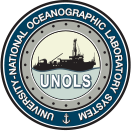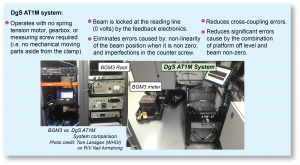Marine Gravimetry
PFPE supports the maintenance and operation gravimeters on UNOLS vessels. This includes DgS gravimeters and some older BGM-3 instruments (currently being phased out).
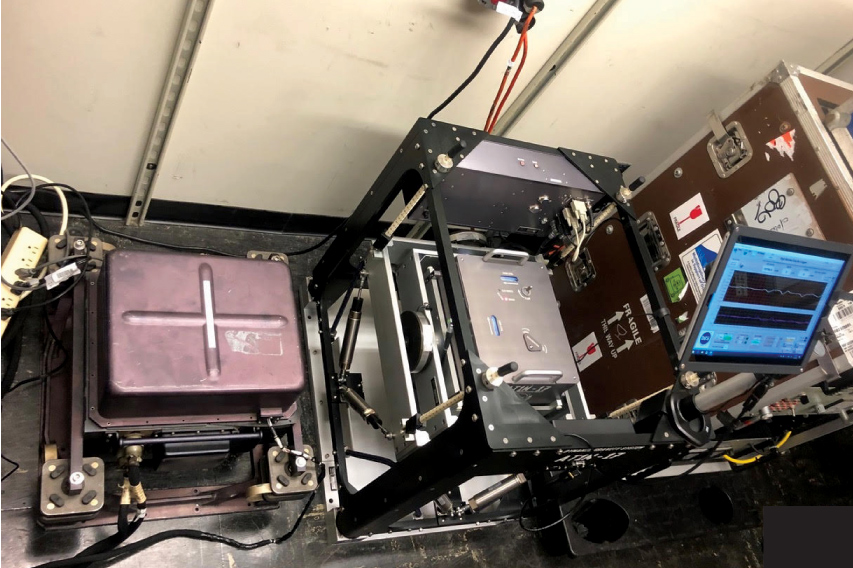
gravimeter inventory
| Gravimeter | SN | Hosted Ship | Gravimeter | SN | Hosted Ship |
|---|---|---|---|---|---|
| BGM3 | 213 | WHOI | BGM3 | 218 | Revelle |
| BGM3 | 219 | Kilo Moana | BGM3 | 220 | Armstrong |
| BGM3 | 221 | Healy | BGM3 | 222 | Sikuliaq |
| BGM3 | 223 | Langseth | BGM3 | 224 | Ride |
| BGM3 | 225 | Atlantis | DgS | AT1M-17 | Thompson |
| DgS | AT1M-21 | Atlantis |
Gravimeter operations at sea
The technicians on the host vessel are responsible for maintaining the gravimeters at sea and conduct weekly and daily systems checks. During science operations, it is the responsibility of the science party to check the gravimeter status on an hourly basis and inform the technicians of any problems. The science party is also responsible for verifying the quality of the data while at sea. PIs should plan for this requirement when scheduling watch duties for their cruise.
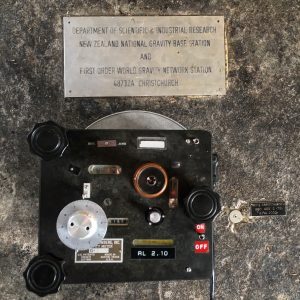
Gravity tie measurement at Christchurch NZ Botanical Gardens gravity station. Photo by coutesy of Thomas M Lanagan.
Gravity Ties
Gravity ties are crucial for obtaining gravity measurements from a relative gravimeter. Before and after each cruise at a port, the meter measurements need to be tied into the nearest gravity base station at which the absolute gravity value is known. This value is used to determine instrumental drift and to provide an absolute value to which gravity anomalies relate. The value of the tie has to be corrected If the altitudes of the absolute tie and the tie of the meter are not identical. Vessel operators are welcome to contact PFPE for the tie information, and we will assist with finding the nearby base station.
PFPE provides software for recording gravity ties. Both a javascript app and a MATLAB-based GUI are available on the PFPE github page.
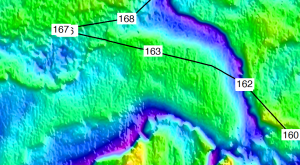
Free air anomaly countour map.
Data
For permanently installed shipboard gravimeters, each institution and vessel logs gravity data in its own format. PIs can contact the vessel they will be using for the exact formats and data samples. For pool gravimeters, PFPE can provide this information.
PFPE provides the shipgravPython package for reading, processing, and analyzing gravimeter data. The package is able to read files from most UNOLS vessels. There is also a MATLAB GUI available which can be used for quality control checks on data from DgS meters.
PFPE is currently working with the ship operators and the NSF ‘Rolling Deck to Repository’ (R2R) initiative led by Lamont-Doherty Earth Observatory to establish standard data logging formats and processing software. Scientists are encouraged to contact PFPE for more information and provide feedback on this effort.
dgs gravimeters
As of 2024, PFPE has transitioned many shipboard instruments from legacy BGM-3s to DgS AT1Ms. These new instruments have many advantages, detailed in the figure on the left. If you have questions about the DgS instruments, please contact PFPE.
